
Vegetation Around Las Vegas

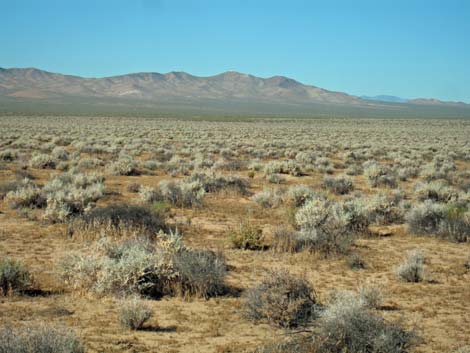 |
Shadscale Scrub (Upper Sonoran Life Zone) Non-technical Description: A vast expanse of shadscale on higher-elevation desert flats with poor drainage in the western and northern Mojave Desert. Technical Description: Shadscale scrub typically grows on poor drained, alkaline or saline soils heavy with clay, and often underlain by impermeable layers that help water pool on the surface. This habitat type is found on flat valley bottoms from about 3,000 to 6,000 feet in the western and northern Mojave Desert. Summers are very hot and dry, and rainfall is 6 to 10 inches per year. Vast expanses of Shadscale can be found around the towns of Lancaster and Mojave (CA) in the western Mojave, northward into the Owens Valley and Death Valley region, and along Corn Creek Road in Tule Spring Fossil Beds National Monument. |
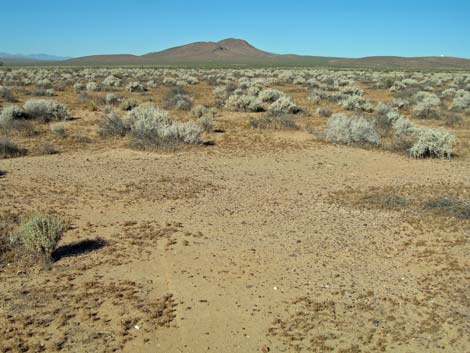 Bare areas show where water pools during rain |
The Shadscale Scrub vegetation type typically is surrounded on hillsides and higher elevation slopes by the more widespread Mojave Desert Scrub vegetation type where Creosote bush, white bursage, and Joshua trees (Yucca brevifolia and Yucca jaegerana) are common. When in the Shadscale Scrub, these species are the green in the background. In the Shadscale Scrub vegetation type, shadscale is the dominant shrub, but other salt-tolerant shrub species such as hopsage and winterfat also occur. Many species of annual plants bloom in the spring, and the dry, gray landscape often turns yellow, red, purple, and white during spring. Shadscale Scrub vegetation type is under threat from the invasion of non-native grass, especially red brome grass. Red brome carries wildfires in areas not adapted to fire, killing the existing vegetation and replacing it with grasses. The burned off shrublands may never return to the current conditions. |
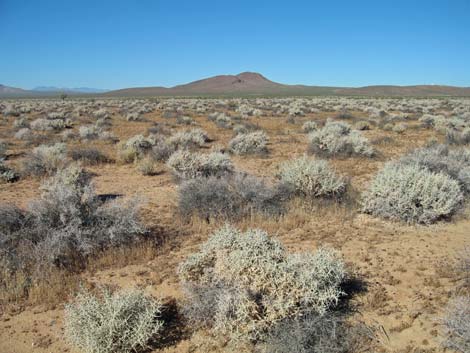 |
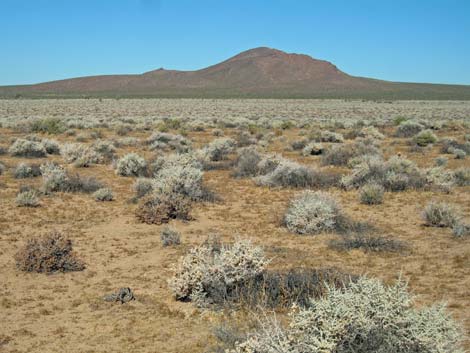 |
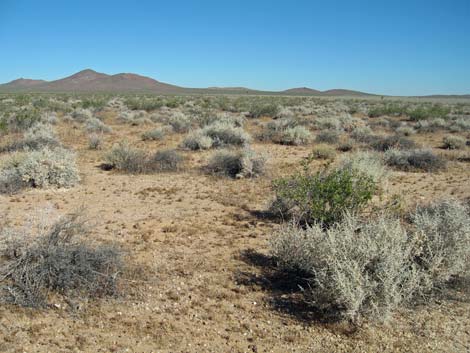 On the edges, creosote and other species mix with shadscale |
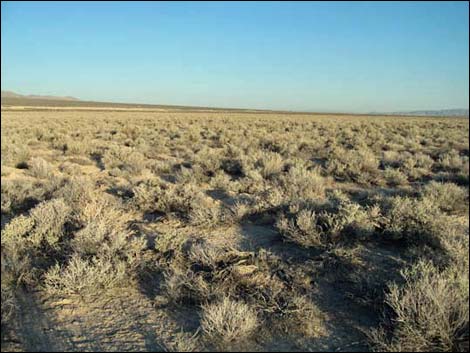 Saltbush flats along Corn Creek Road (view ENE) |
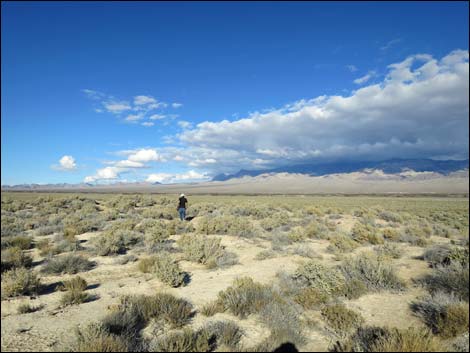 Birder looking for Bell's Sparrow and Le Conte's Thrasher |
 Saltbush flats -- home for sparrows and thrashers |
All distances, elevations, and other facts are approximate.
![]() ; Last updated 200120
; Last updated 200120
| Vegetation | Glossary | Copyright, Conditions, Disclaimer | Home |